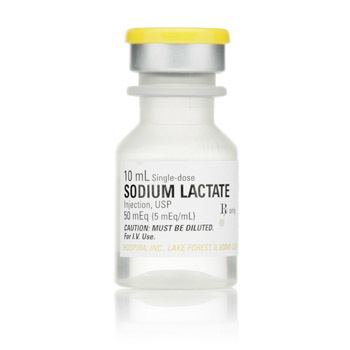Formula C3H5NaO3 Density 1.33 g/cm³ Appearance White powder | Molar mass 112.06 g/mol Boiling point 113 °C | |
 | ||
Hardening your cold process soap using sodium lactate
Sodium lactate is the sodium salt of lactic acid, and has a mild saline taste. It is produced by fermentation of a sugar source, such as corn or beets, and then, by neutralizing the resulting lactic acid to create a compound having the formula NaC3H5O3
Contents
Usage
As a food additive, sodium lactate has the E number E325 and is naturally a liquid product, but also is available in powder form. It acts as a preservative, acidity regulator, and bulking agent.
Sodium lactate is sometimes used in shampoo products and other similar items such as liquid soaps as it is an effective humectant and moisturizer.
Sodium lactate is used to treat arrhythmias caused by overdosing of class I antiarrythmics, as well as pressor sympathomimetics which can cause hypertension.
It also can be given intravenously as a source of bicarbonate for preventing or controlling mild to moderate metabolic acidosis in patients with restricted oral intake (for sodium bicarbonate) whose oxidative processes are not seriously impaired. However, the use in lactic acidosis is contraindicated. It can cause panic attacks in patients with existing panic disorder.
Regarding milk
Despite the similarity in name, sodium lactate is not chemically similar to lactose (milk sugar) and therefore need not be restricted by those with lactose intolerance. In general, lactates such as sodium, calcium, and potassium lactate are salts derived from the neutralization of lactic acid and most commercially used lactic acids are fermented from dairy-free products such as cornstarch, potatoes, or molasses. Sugar or tapioca additionally may be used. In some rare instances some lactic acid is fermented from dairy products such as whey and lactose. Whey is made of up 6.5% solids of which 4.8% is solid lactose. Waste whey is infrequently used to produce lactic acid when the whey itself is produced as waste during the manufacture of certain dairy products. Such dairy-type lactic acid generally goes back into dairy products, such as ice cream and cream cheese, rather than into non-dairy products. Moreover, although the lactic-acid starter culture to ferment corn or beets may contain milk, sodium lactate does not contain milk protein and need not be restricted by someone avoiding milk or those with a milk allergy.
